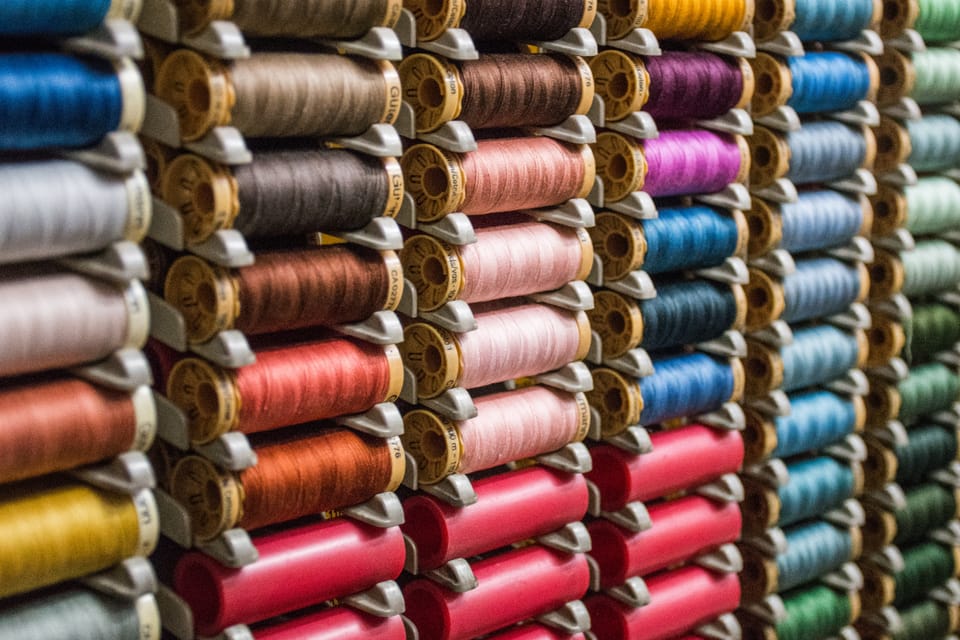Report reveals slow progress in sustainable textile materials

Almost all textile brands have a formal strategy to use more sustainable materials and many are making progress on cotton, but the industry is lagging behind on circularity and traceability.
The latest Brands and Retailers Materials Benchmark released by non-profit Textile Exchange reveals that 95% of textile brands now have a formal sustainability strategy, primarily focused on raw materials and reflected in board accountability.
The organisation collected data from almost 450 textile brands and retailers across apparel, footwear, sports, and home, and surveyed 172 mostly large enterprises located primarily in Europe and the Americas, as part of its efforts to encourage “a paradigm shift” across the industry.
Cotton and polyester get the most attention
Cotton is the most used material in the industry, and progress is being made to source it more sustainably: more than three-quarters (76%) of all the cotton used in the sector is organic, regenerative or recycled, up from 63% in 2019. The Better Cotton Initiative, which aims to increase traceability, sustainability and living standards in cotton production, is by far the most popular certification among brands.
But beyond cotton, progress has been slow. Uptake of other plant fibres hailed for their limited environmental impact, such as hemp and flax, is still minimal. The second most used materials group is synthetic fibres, only 1% of which come from recycling.
Recycled polyester is seen as a priority, and with demand largely exceeding supply, industry giants like Zara and Mango owner Inditex are investing in forward purchases to help scale textile-to-textile recycling of this material. Recycled polyester now makes up 32% of all polyester uptake, up from 21% in 2019. Nearly half of the companies surveyed by Textile Exchange have set a target for “100% more sustainable polyester”, which usually means recycled or biobased.
Beyond cotton and polyester, the transition has been arduous, and overall, more than half (52%) of all materials used in the sector remain conventional. About a third (35%) comes from preferred sources, largely driven by cotton, and just 13% is recycled.
Read also: Supply chain sustainability and social impacts – more integration needed
Reducing GHG emissions is the number one motivation
According to the survey, the top driver for switching to sustainable materials is the reduction of greenhouse gas (GHG) emissions, with 83% of respondents having performed a climate impact assessment and 96% of those actively engaged in reducing their carbon footprint.
However, other interconnected aspects of the climate crisis are getting much less attention: only 39% of textile companies have assessed the impacts of cultivating and extracting raw materials on nature, including land use, biodiversity and soil health.
This disparity is reflected in the setting of targets as well, with a wide majority of brands and retailers (87%) having set or being in the process of setting specific, measurable, achievable, realistic and time-bound (SMART) goals on climate, compared to less than half (47%) for nature.
Circular economy goals hindered by business case and traceability concerns
The data published by Textile Exchange shows that more than half of companies (58%) have already developed a formal circular economy strategy, mostly focused on reducing the use of virgin materials and re-evaluating business models. Many brands are experimenting with resale, repair and upcycle of garments, but only a minority (around 20% depending on the activity) are seeing a clear return on investment.
While they are making progress on reducing pre-consumer waste (such as textile scraps) through demand forecasting and supplier engagement, a lack of traceability over unsold finished goods is preventing companies in the sector from taking ambitious action. Only 25% of respondents said they could estimate the full volume of unsold finished goods, while nearly half are unable to report on this data.
Additionally, textile brands’ circularity ambitions are not yet reflected in design: few companies answered questions on this topic, but of the 68 that did, only 18% said they incorporate circularity into design, primarily by designing for durability and longevity, followed by using safe, renewable and recycled raw materials, and designing for recyclability.







Member discussion